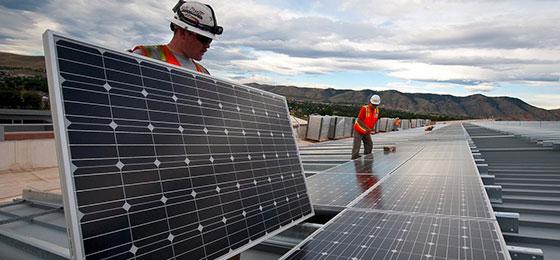The sun as key source of energy for a sustainable circular economy
08.01.2020
A sustainable circular economy must be founded on a sustainable energy system, not least because the circulation of materials requires a lot of energy. But how much renewable energy can we sustainably extract from the Earth system?
Researchers at Empa have developed a method with which they can calculate the achievable energy potentials of various renewable resources, taking into account the Earth system boundaries.
Initial results show that the solar energy that could be generated today on buildings and infrastructure could sustain a 2000 Watt society (for a predicted global population of 11 billion people). And if we additionally ‘collect’ solar energy on less than 10% of desert surfaces, we would be able to supply the average energy demand of a person living in Switzerland to the entire world. From a global perspective all other energy resources are secondary, which is not to say that they are not important locally.
A sustainable circular economy therefore can and should function 100% on renewable energy. This means that material cycles and circulating products must be powered primarily by the sun. But it is important not to forget the technical measures needed to balance the geographical and temporal variability of such an energy system (e.g. storage technologies, large-scale distribution networks, smart grids).
The article ‘Powering a Sustainable and Circular Economy—An Engineering Approach to Estimating Renewable Energy Potentials within Earth System Boundaries’ from the project ‘Laboratory for Applied Circular Economy (LACE)' was published Open Access on 11 December 2019 in Energies.
